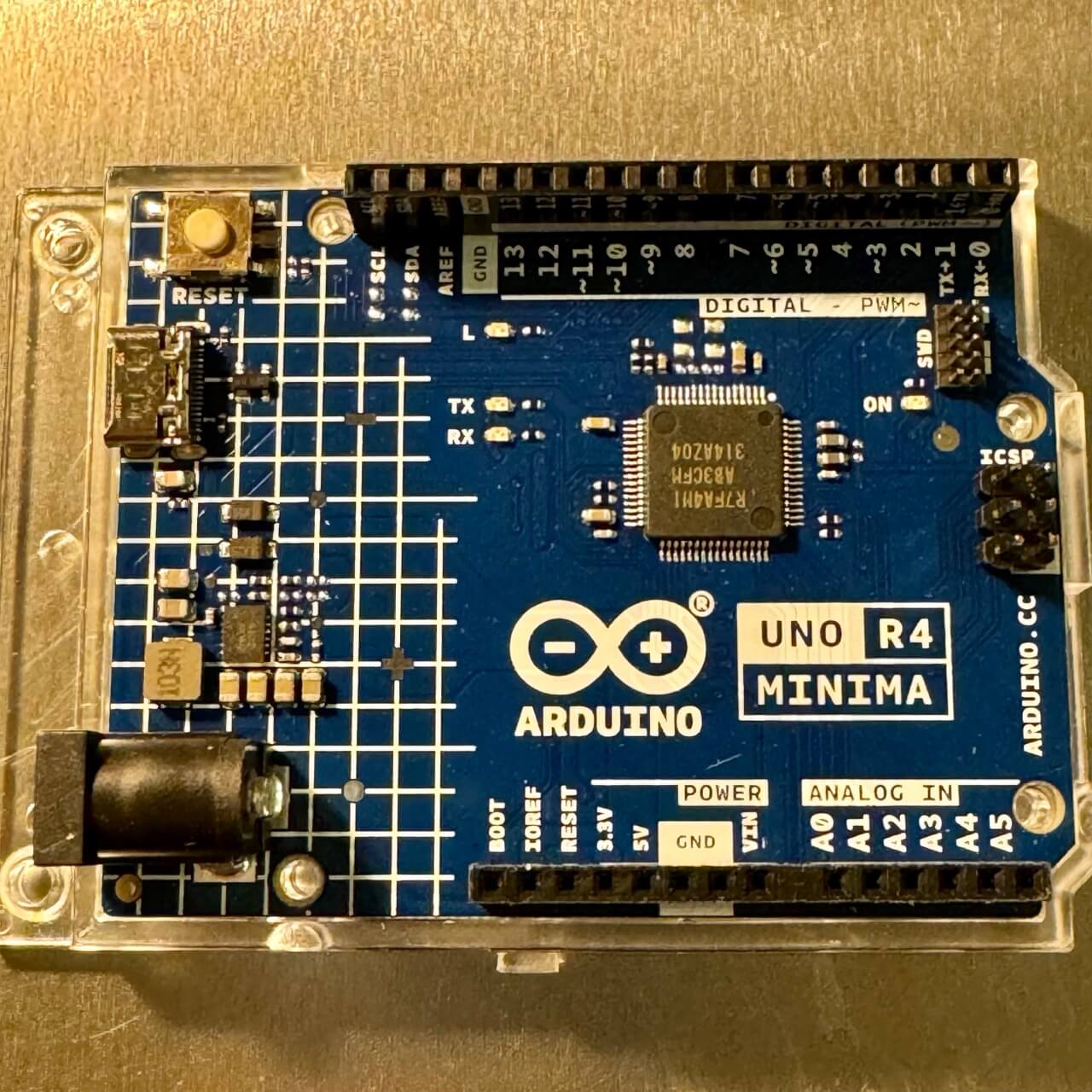Introduction
The Arduino R4 Minima represents a significant leap forward in the Arduino ecosystem, featuring the powerful Renesas RA4M1 microcontroller. Built on the ARM Cortex-M4 architecture, this board delivers enhanced processing capabilities while maintaining the simplicity and accessibility that Arduino is known for. Perfect for both beginners and advanced users, the R4 Minima opens new possibilities in IoT, robotics, and embedded systems development.
Technical Specifications
- Microcontroller: Renesas RA4M1 (Arm Cortex-M4)
- Operating Voltage: 5V
- Input Voltage (recommended): 7-12V
- Input Voltage (limit): 6-20V
- Digital I/O Pins: 14 (6 with PWM output)
- Analog Input Pins: 6
- DC Current per I/O Pin: 20 mA
- Flash Memory: 256 KB
- SRAM: 32 KB
- Clock Speed: 48 MHz
- USB Connection: USB-C for communication and programming
Advanced Features
- Enhanced ADC Resolution: 12-bit resolution for more precise analog readings
- Hardware Floating Point Unit: Enables faster mathematical computations
- DMA Controller: Allows for efficient data transfer without CPU intervention
- Real-Time Clock (RTC): Supports accurate timekeeping and timestamp functions
- Low Power Modes: Multiple sleep modes for power-efficient applications

No Ads Available.
Board Layout and Connectivity
Power Section
- USB-C Port: Primary power and programming interface
- Power Jack: For external power supply (7-12V recommended)
- Voltage Regulator: Efficient power management system
- Power LED: Visual indicator for board power status
- Protection Circuitry: Overcurrent and reverse polarity protection
Pinout Diagram
- Digital Pins (0-13): Includes PWM, interrupt, and SPI capabilities
- Analog Pins (A0-A5): 12-bit resolution, supporting advanced sensor applications
- Special Function Pins: I²C (A4/A5), LED_BUILTIN (Pin 13), and AREF (External reference for analog inputs)
Programming the Arduino R4 Minima
Arduino IDE Setup
- Download latest Arduino IDE
- Install Renesas RA core support
- Configure board settings
Communication Interfaces
Serial Communication
- UART configuration and baud rate settings
- Buffer management for efficient data transfer
I²C Implementation
- Master/Slave configurations
- Clock speed settings and multi-device communication
SPI Protocol
- High-speed data transfer
- Device selection and timing considerations
Memory Management
- Flash Memory: Bootloader considerations and partitioning
- SRAM Utilization: Efficient variable management and stack optimization
Performance Optimization
- Power Efficiency: Sleep mode implementation and battery management
- Processing Speed: Interrupt handling and cache optimization
Troubleshooting and Maintenance
Common Issues
- Upload errors and solutions
- Power-related problems
- Communication interface issues
Future Expansions
Hardware Additions
- Compatible shields and sensor modules
- Communication expansions like Wi-Fi and Bluetooth modules
Software Updates
- Firmware updates for enhanced stability
- New libraries and toolchain enhancements
Conclusion
The Arduino R4 Minima is an exceptional platform for expanding electronics and programming knowledge, supporting both simple and complex projects. Its advanced features and robust community support make it an excellent choice for beginners and professionals alike.
For purchasing the Arduino R4 Minima, visit Amazon.


